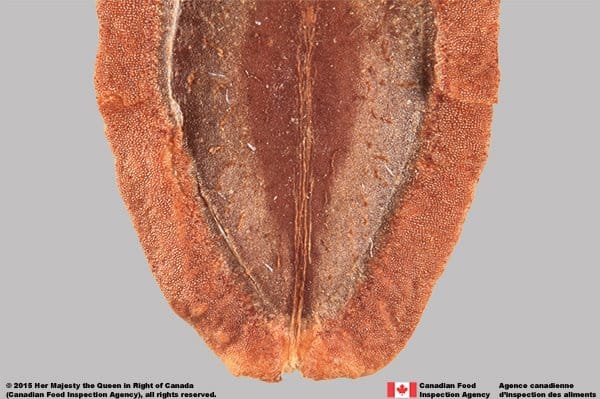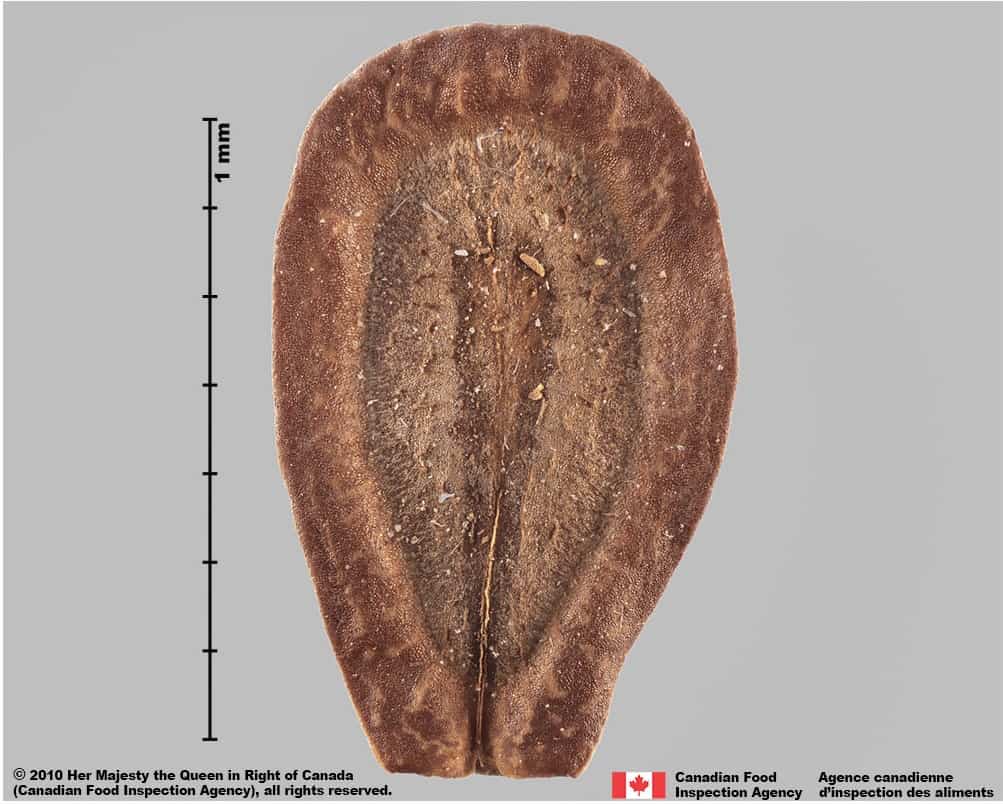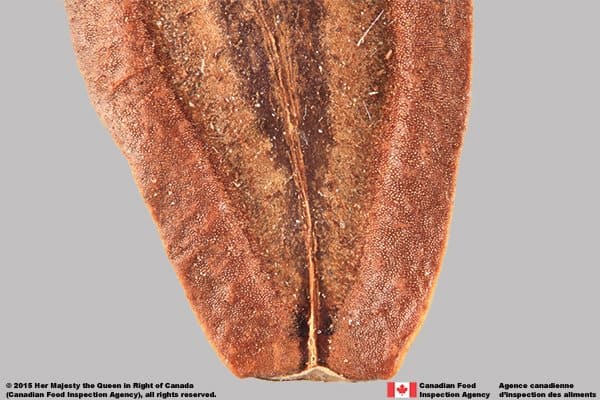Asclepias syriaca
Explore More :
Explore plus :
Overview
Aperçu
Regulation :
Remarques Réglementation:
- Quarantine lists of countries e.g. Mexico *may be updated without notice
Regulation Notes:
On quarantine lists of countries e.g. Mexico*.
*Quarantine lists of countries may be updated without notice.
Distribution :
Répartition :
This species is native to North America (USDA-ARS 2017). It is widespread across the eastern United States as well as in Montana and Oregon (USDA-NCRS 2017).
Habitat and Crop Association :
Habitat et Cultures Associées :
Common milkweed prefers roadsides, fencerows, railroads, river basins, waste areas, wooded areas, grasslands and marshlands. It has also been found in cereals, field crops and forage crops (Bhowmik and Bandeen 1976).
Economic Use, cultivation area, and Weed Association :
Utilisation économique, zone de culture et association de mauvaises herbes :
Duration of Life Cycle :
Durée du cycle vital:
Perennial
Dispersal Unit Type :
Type d’unité de dispersion :
Seed
General Information
RENSEIGNEMENTS GÉNÉRAUX
This species reproduces both by seeds and adventitious root buds (Bhowmik and Bandeen 1976). It contains several toxic substances affecting sheep, cattle and occasionally horses. Crops most affected by this species are soybeans, corn, peanuts, grain sorghum and maize (CABI 2017).
.
Asclepias syriaca plants (Robert Vidéki, Doronicum Kft., Bugwood.org)
Identification
Identification
-
Seed
Size
- Seed length: 6.4 – 9.0 mm (average: 7.8 mm); width: 4.4 – 6.1 mm (average: 5.2 mm)
Shape
- Teardrop-shaped seed, with a wing around the margin; flattened; the narrow end is truncate
Surface Texture
- Seed surface is smooth; the winged margin of the seed is bubbled and slightly wrinkled
- There is a pale, central ridge on one side of the seed
Colour
- The seed is dull, reddish-brown, a lighter brown centre and a central dark, teardrop-shaped marking only on one side
- There is often a thin, pale grey outline between the seed and the marginal wing
Other Features
- The hilum is small and at the narrow end of the seed
- Immature or freshly shed seed may have a tuft of white hairs at the narrow end

Common milkweed (Asclepias syriaca) seeds








Identification Tips
CONSEILS POUR L’IDENTIFICATION
Additional Botany Information
AUTRES RENSEIGNEMENTS BOTANIQUES

Asclepias syriaca inflorescence (Robert Vidéki, Doronicum Kft., Bugwood.org)





Similar Species
ESPÈCES SEMBLABLES
Similar species are based on a study of seed morphology of various species, and those with similar dispersal units are identified. The study is limited by physical specimen and literature availability at the time of examination, and possibly impacted by the subjectivity of the authors based on their knowledge and experience. Providing similar species information for seed identification is to make users aware of similarities that could possibly result in misidentification.
Asclepias speciosa (showy milkweed)
Seeds of both showy milkweed and butterflyweed have a similar teardrop shape, reddish-brown colour and central dark markings as common milkweed. The seeds of these three species are similar and may require comparison with reference specimens.
Showy milkweed seeds are generally smaller (average length: 6.6 mm; average width: 4.0 mm), appear thicker, the wrinkled and bubbled surface texture of the wing is more pronounced, and they lack the grey outline of common milkweed.
Asclepias tuberosa (Butterflyweed)
Butterflyweed seeds are generally smaller (average length: 5.8 mm; average width: 4.1 mm), the surface texture of the winged margin is smoother, the grey outline is lacking and the seed is more fragile than common milkweed.
Click to select species
Cliquez pour sélectionner les espèces

Asclepias speciosa

Asclepias tuberosa
Comparison Window
Fenêtre de comparaison
MAIN SPECIES
ESPÈCES PRINCIPALES
Asclepias syriaca

Asclepias syriaca
Apocynaceae
Common milkweed (Asclepias syriaca) seeds
MAIN SPECIES
ESPÈCES PRINCIPALES
Asclepias syriaca

Asclepias syriaca
Apocynaceae
Common milkweed (Asclepias syriaca) seeds
MAIN SPECIES
ESPÈCES PRINCIPALES
Asclepias syriaca

Asclepias syriaca
Apocynaceae
Common milkweed (Asclepias syriaca) seeds
MAIN SPECIES
ESPÈCES PRINCIPALES
Asclepias syriaca

Asclepias syriaca
Apocynaceae
Common milkweed (Asclepias syriaca) seed
MAIN SPECIES
ESPÈCES PRINCIPALES
Asclepias syriaca

Asclepias syriaca
Apocynaceae
Common milkweed (Asclepias syriaca) seed
MAIN SPECIES
ESPÈCES PRINCIPALES
Asclepias syriaca

Asclepias syriaca
Apocynaceae
Common milkweed (Asclepias syriaca) seed
MAIN SPECIES
ESPÈCES PRINCIPALES
Asclepias syriaca

Asclepias syriaca
Apocynaceae
Common milkweed (Asclepias syriaca) seed
MAIN SPECIES
ESPÈCES PRINCIPALES
Asclepias syriaca

Asclepias syriaca
Apocynaceae
Common milkweed (Asclepias syriaca) follicles and seeds
SIMILAR SPECIES
ESPÈCES SEMBLABLES
Asclepias speciosa

Asclepias speciosa
Apocynaceae
Showy milkweed (Asclepias speciosa) seeds
SIMILAR SPECIES
ESPÈCES SEMBLABLES
Asclepias speciosa

Asclepias speciosa
Apocynaceae
Showy milkwed (Asclepias speciosa) seeds
SIMILAR SPECIES
ESPÈCES SEMBLABLES
Asclepias speciosa

Asclepias speciosa
Apocynaceae
Showy milkweed (Asclepias speciosa) seeds
SIMILAR SPECIES
ESPÈCES SEMBLABLES
Asclepias speciosa

Asclepias speciosa
Apocynaceae
Showy milkweed (Asclepias speciosa) seed
SIMILAR SPECIES
ESPÈCES SEMBLABLES
Asclepias speciosa

Asclepias speciosa
Apocynaceae
Showy milkweed (Asclepias speciosa) seed
SIMILAR SPECIES
ESPÈCES SEMBLABLES
Asclepias speciosa

Asclepias speciosa
Apocynaceae
Showy milkweed (Asclepias speciosa) seed
Need ID Help?
Besoin d’aide pour l’identification?
Reference(s)
Référence(s)
Bhowmik P.C. and Bandeen J.D. 1976. The biology of Canadian weeds 19. Asclepias syriaca L. Canadian Journal of Plant Science 56: 579-589.
Centre for Agriculture and Bioscience International (CABI). 2017. Invasive Species Compendium, CAB International, Wallingford, UK. https://www.cabidigitallibrary.org/journal/cabicompendium Accessed April 25, 2017.
Global Biodiversity Information Facility (GBIF) Secretariat. 2022. https://doi.org/10.15468/39omei Accessed via https://www.gbif.org/species/3170247 Accessed December 29, 2022.
U.S. Department of Agriculture-Agricultural Research Services (USDA-ARS). 2017. Germplasm Resources Information Network (GRIN), https://npgsweb.ars-grin.gov/gringlobal/taxon/taxonomysearch Accessed April 25, 2017.
U.S. Department of Agriculture-Natural Resources Conservation Service (USDA-NRCS). 2017. The PLANTS Database. National Plant Data Team, Greensboro, NC USA. https://plants.usda.gov/home Accessed April 25, 2017.
U.S. Department of Agriculture-Natural Resources Conservation Service (USDA-NRCS). 2022. The PLANTS Database. National Plant Data Team, Greensboro, NC USA. http://plants.usda.gov Accessed December 29, 2022.




